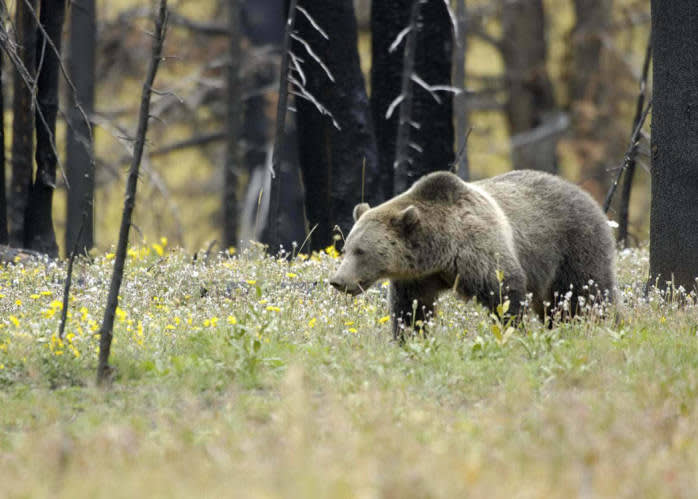How Closely Are Grizzlies Following Hunters? Study Aims to Find Out
OutdoorHub Reporters 11.21.14

When hunting for elk or deer, the last thing most hunters want is an encounter with a hungry bear. Yet the large predators have an uncanny ability to track down animal carcasses, and a study by researchers with the Interagency Grizzly Bear Study Team may have revealed a vital clue as to how the bears do it. Despite being large (especially in hyperphagia, the stage where bears gorge on as much food as they can before hibernation), bears are actually quite stealthy—stealthy enough that they can trail hunters from about 100 yards. According to Mike Ebinger, the biologist leading a new study on grizzly bears in Grand Teton National Park, the secret to bears finding hunter-downed game even before they do may be quite simple: they follow hunters from the get-go.
This piece of unnerving information was discovered when researchers attached GPS trackers to a number of collared bears, and then handed out the devices to hunters as well. According to the Billings Gazette, Ebinger and his team handed out 100 GPS units to volunteers going elk hunting near Grand Teton. The team then matched the routes of elk hunters with those of the collared bears and found that the bruins had been following the hunters closely, in many cases without them ever noticing. In at least one instance, a bear picked up a hunting party’s trail and began following it—even before the hunters harvested any elk. In fact, grizzlies likely perceive no difference between stealing elk meat from a hunter than from other predators. Relying on their bulk and strength, bears are accustomed to intimidating other carnivores to shy away from fresh kills.
“Bears opportunistically scavenge carcasses throughout the active season and commonly usurp kills of other predators, such as cougars and, since their reintroduction in 1995, gray wolves,” stated a report last year by the Interagency Grizzly Bear Study Team. “Ungulate remains left by hunters also provide grizzly bears with meat and bears are attracted to areas outside of national parks when these remains become available during the fall.”
Stealing a human hunter’s kill, however, does not always work out for the bears. Many hunters have tracked their deer or elk only to find that a bear has already claimed it. Most of these situations are resolved peacefully—the bear either runs off or the hunter decides to give the bear a free meal—but sometimes it does not. This is especially common when retrieving carcasses, as bears will track a kill for fairly long distances. Just last week, a group of hunters in Alaska were ambushed by a group of five brown bears after transporting a deer carcass back to their ship. Two of the bears were shot dead at close range and the rest fled, but not before one of the hunters was seriously mauled.
“These carcasses have a lot of pulling power and holding power,” Ebinger told the Gazette.
The goal of the study team’s research is to actually find out how many bears congregate in the area during hunting season. If more bears enter the study area, it would mean that the bears may be taking advantage of hunters to find their prey, especially since the predators are not adept at taking down adult elk by themselves. Montana’s elk hunt also coincides with the bears entering hyperphagia, which means that the large mammals are especially desperate for more calories when hunters enter the woods. That makes for a volatile combination.
Have you ever had a harvest stolen by a bear? Do you prepare for a bear encounter before you head out? Let us know in the comments.

